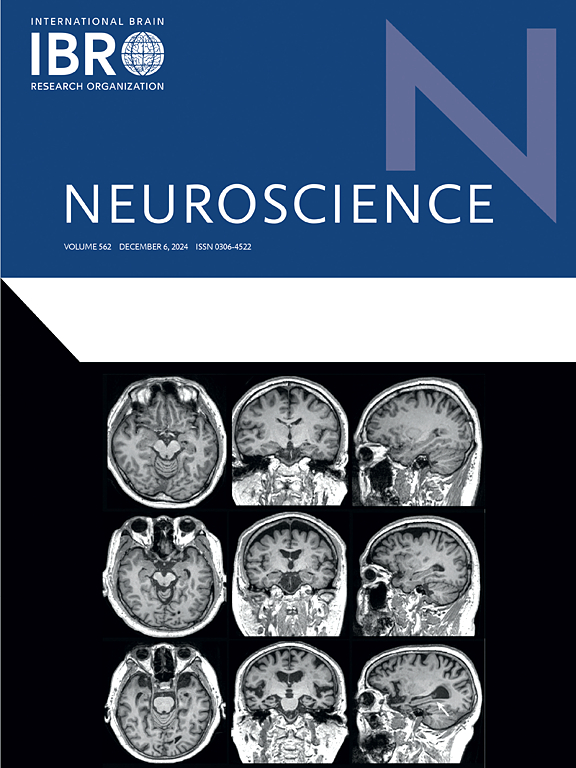新生大鼠胼胝体的兴奋毒性损伤:早产儿脑病模型
IF 2.9
3区 医学
Q2 NEUROSCIENCES
引用次数: 0
摘要
早产脑病(EP)可在暴露于极端早产、低出生体重、缺氧、感染和炎症等危险因素的早产儿中发展。这些因素可诱发脑灰质和白质的兴奋性毒性,导致神经元和少突胶质细胞祖细胞的死亡。了解EP的脑机制需要动物模型。本研究采用n -甲基- d -天冬氨酸(NMDA)在出生后第5天(PND)向新生雄性大鼠胼胝体(CC)注射的方法,建立了EP模型。将大鼠分为五组:完整组、对照组和三剂量NMDA(3、4或5 μg)。在PND 20上,我们测量了CC、运动皮层(MC)和侧脑室的体积。5 µg NMDA剂量引起的损伤最大。我们随后在pnd 6、10、20和30上评估这些结构以监测病变进展。我们还分析了髓鞘碱性蛋白(MBP)的表达,并使用免疫荧光标记对neun阳性细胞进行计数。NMDA组显示MBP表达降低,MC中neun阳性细胞减少。此外,与对照组相比,NMDA处理的大鼠在开阔场地的运动活动增加,旋转杆任务中的跌倒潜伏期减少。总之,我们的大鼠围产期兴奋性毒性损伤模型显示出结构异常,包括MBP下降和neun阳性细胞丢失,以及运动和习惯障碍,与人类EP相似。本文章由计算机程序翻译,如有差异,请以英文原文为准。

Excitotoxic lesion in the corpus callosum of neonatal rats: A model for encephalopathy of prematurity
Encephalopathy of prematurity (EP) can develop in preterm infants exposed to risk factors like extreme prematurity, low birth weight, hypoxia, infections, and inflammation. These factors can induce excitotoxicity in the brain’s gray and white matter, leading to the death of neurons and oligodendrocyte progenitors. Understanding the brain mechanisms of EP requires animal models. In this study, we generated an EP model by injecting N-methyl-D-aspartic acid (NMDA) into the corpus callosum (CC) of neonatal male rats on postnatal day (PND) 5. Rats were divided into five groups: Intact, Vehicle, and three doses of NMDA (3, 4, or 5 μg). On PND 20, we measured the volumes of the CC, motor cortex (MC), and lateral ventricles. The 5 µg NMDA dose caused the largest lesion. We later assessed these structures on PNDs 6, 10, 20, and 30 to monitor lesion progression. We also analyzed myelin basic protein (MBP) expression and counted NeuN-positive cells using immunofluorescent markers. NMDA groups showed reduced MBP expression and fewer NeuN-positive cells in the MC. Additionally, NMDA-treated rats exhibited increased motor activity in the open field and reduced fall latencies in the rotarod task compared to controls. In conclusion, our perinatal excitotoxic lesion model in rats demonstrates structural abnormalities, including decreased MBP and loss of NeuN-positive cells, alongside motor and habituation impairments, resembling those seen in human EP.
求助全文
通过发布文献求助,成功后即可免费获取论文全文。
去求助
来源期刊

Neuroscience
医学-神经科学
CiteScore
6.20
自引率
0.00%
发文量
394
审稿时长
52 days
期刊介绍:
Neuroscience publishes papers describing the results of original research on any aspect of the scientific study of the nervous system. Any paper, however short, will be considered for publication provided that it reports significant, new and carefully confirmed findings with full experimental details.
 求助内容:
求助内容: 应助结果提醒方式:
应助结果提醒方式:


